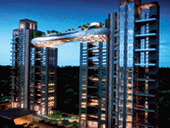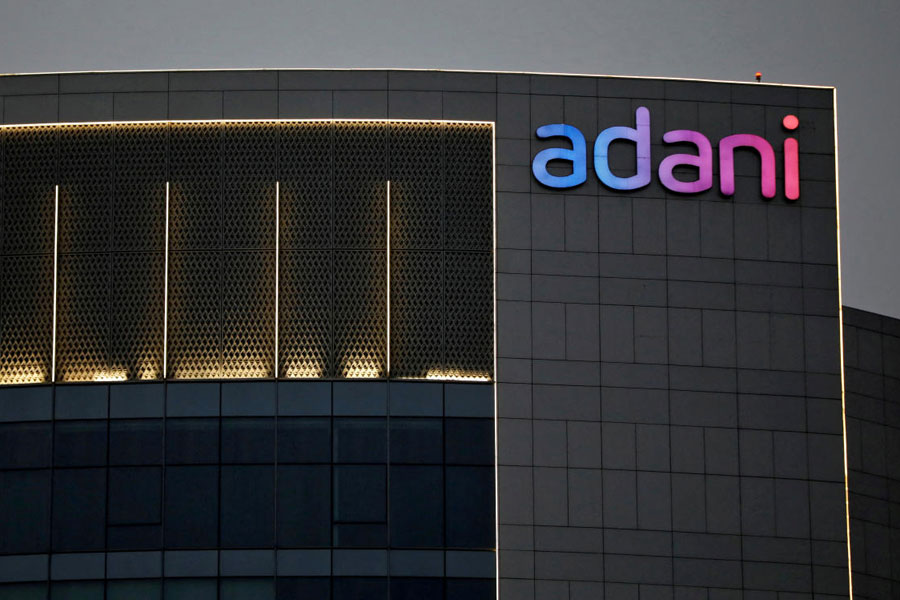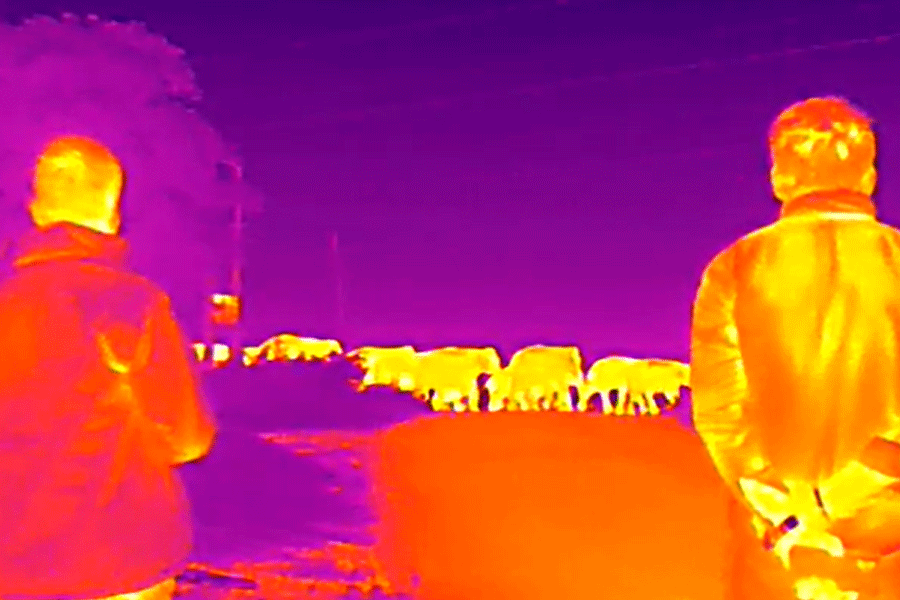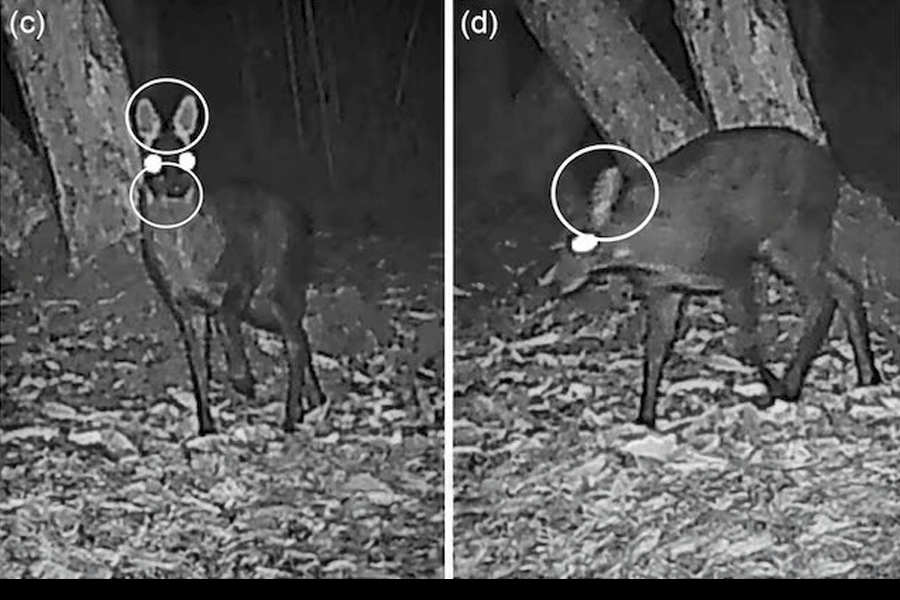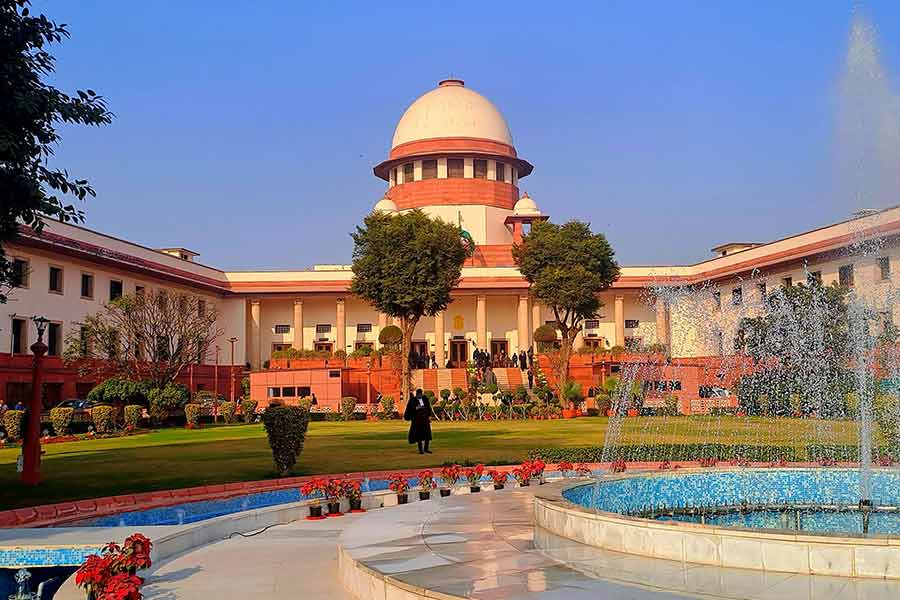 |
Is it a cloud? Is it a club? No, it’s a club in the clouds! ‘Deya’, a giant sculpture hosting a club in suspension, amorphous in shape, just like a cloud, is set to adorn Calcutta’s skyline. Floating at 500ft, the crown jewel of the upcoming luxury residential condominium called Atmosphere on the EM Bypass (behind Science City) this is billed to be the first of its kind in the country. t2 offers an insight into the design marvel through twin interviews with the husband-wife architect team of Khoo Peng Beng and Belinda Huang of ARC Studios, Singapore, who have created Atmosphere, and Hossein Rezai-Jorabi, the group director, Web Structures, structural engineers for the dream venture of Forum Projects.
Khoo Peng Beng and Belinda Huang
How do you make something so solid and heavy look so light?
Firstly, the form of Deya itself is made up of curves. Like clouds and balloons, it appears to be filled with air. This gives the form a perceived lightness. Secondly, Deya is clad with expanded aluminium panels of varying porosity. This creates a play of light and transparency that further de-materialises the form, the solidity and physicality of the structure. At times it seems extremely solid, reflecting any light that falls on it. At times it seems transparent, allowing light to pass through. This creates a mysterious sense of the object, always changing according to the light condition. Finally, we have created a series of panels that carry kinetic discs. These discs will move in the wind. At times the discs will reflect the sky, at times the earth. The shimmering effect will be like a silver lining of a cloud. The movement of the discs also helps to make Deya’s surface seem delicate, fragile and therefore light.
Will Atmosphere change the paradigm of high-aspiration residential development in India?
Atmosphere will re-define high-rise living. It will expand the possibilities for cities to be compact yet liveable, sustainable and beautiful. I believe architects and developers working on luxury high-rise residential projects will look at this project as an anchor in the development of this architectural typology.
Can Atmosphere rival the aura that surrounds Pinnacle@Duxton in Singapore?
Pinnacle@Duxton and Atmosphere are two distinct projects created out of very different responses and context. I believe once Atmosphere is completed, it will definitely have its own aura, a very different aura from that of Pinnacle@Duxton simply because they are very different.
How will Atmosphere sit in context amidst a Calcutta skyline largely devoid of character, icons or aesthetic awareness?
Every building designed is a response to the conditions that allow it to come into being. Once it is created, it then becomes a stimulus for other buildings, providing an anchor, a reference, a feedback. This project will show that Calcutta is ready to embrace the future and to set a totally new direction that is derived very much from its local conditions, but in a totally new way.
Atmosphere for sometime will remain a beacon in the city’s skyline until other tall buildings join its rank along the EM Bypass. This transformation will take time and it will be beautiful to see the area transform.
What has been your most fulfilling project till date?
Each of our projects fulfils a certain need for us.... And for every one of them to be successful requires an incredible effort by those involved, to believe in the project and to energise the project. Only then can a building be created.... We feel extremely privileged to be given the opportunity to create architectural works like Atmosphere, and to be able to work in India.
Hossein Rezai-Jorabi:
 |
What makes Deya special and what are the main challenges in executing it?
There are many characteristics of Deya which make it special. Its sheer size, that of an A380 aircraft; the height at which it hangs, which is over 100m above ground; the functions Deya will accommodate and support — large swimming pools, function rooms, decks, jogging track, etc, all of which require controlled support to ensure functionality of the spaces, etc.
Deya must rank among the most challenging and interesting structures we have designed. This arises from the scale of the structure as well as the high wind speed and relatively high seismicity in Calcutta.
The Deya structure is supported on the two towers, which are themselves subjects of interesting structural design challenges to ensure that the towers and the Deya structure work safely and harmoniously together.
The fabrication and installation of Deya also present interesting challenges in the way the structure is fabricated and lifted into position. All these challenges have been carefully and comprehensively assessed and designed for, so that this unique structure turns into reality.
What is at the core of the domain expertise Web Structures has with highrises?
Highrise structures are one of the areas of core expertise for Web Structures. At the other end of the spectrum, we have done/do a lot of high-specification resorts and hotels in various parts of the world. Our team’s in-depth knowledge of the behaviour of tall buildings under high wind speed and high seismic activities enable us to design tall structures with confidence, economy and elegance.
What kind of seismic load can Deya bear, given Calcutta’s vulnerability?
Calcutta is in a moderately seismic zone, categorised as Zone 3 in the Indian seismic code, and Zone 2A in the unified building code, recently replaced with the international building code. Deya has been designed to safely work under these seismic levels. In addition, it has been analysed against the effects of a number of actual earthquakes in India and elsewhere, notably the devastating earthquake in Bhuj back in January 2001. Our team’s detailed and comprehensive analysis of the two towers and Deya has confirmed the safety and serviceability of them under these parameters.
In a city known for its drab skyline, what can Atmosphere achieve in isolation?
I do not know Calcutta that well. I do, however, believe that Atmosphere is of a level of sophistication that any city anywhere in the world would be proud to have.
How has it been working with the Atmosphere team in Calcutta?
Rahul (Saraf) has been a breath of fresh air and a real visionary. We have been very lucky in that most of our clients worldwide tend to possess a high level of professionalism and sophistication in their approach to the project, its brief and execution. Rahul and his team certainly rank amongst the top echelons of the international clients we have had in over 26 countries.
Finally, what was the experience of working with architecture guru Sir Norman Foster like?
Working with Foster’s team has been most rewarding for us. We have learnt from them that great buildings come from a fusion of creativity with discipline and a lot of hard work. The design process in Foster’s office is one of the most comprehensive ones I have ever seen. It is consistently applied to all projects, regardless of size and location.
Eye on the world sky
More spectacular than the Taj Mahal? That’s the question a Daily Mail article on Atmosphere has asked while describing the “space station-style structure”.
How has Atmosphere caught the eye of the western media? Well, it currently ranks first in the Open Buildings People’s Choice Award among entries sent to the world architecture competition to be held during the World Architecture Festival (WAF) in Barcelona later this year!
This prestigious award is dedicated to providing architecture and design fans with a platform to express their opinions; it is the first major award where real people (not just industry insiders) determine the winner.
The People’s Choice Award will be presented with the other major awards at the WAF and Inside World Festival of Interiors in Barcelona on November 4. So far, this category has got 535 entries registered.

